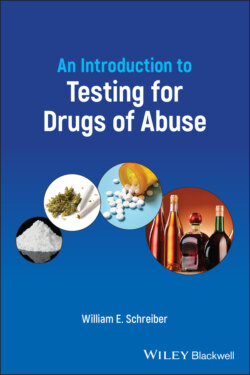Читать книгу An Introduction to Testing for Drugs of Abuse - William E. Schreiber - Страница 38
Interpretation of Specimen Validity Testing
ОглавлениеThe Substance Abuse and Mental Health Services Administration (SAMHSA) has developed criteria for specimen validity in workplace drug testing programs. Dilute and substituted specimens are identified by comparing the values for creatinine and specific gravity (Table 3.1). To label a specimen as adulterated, an abnormal pH or the presence of a known adulterant is required (Table 3.2).
Table 3.1 Substance Abuse and Mental Health Services Administration criteria for labeling a urine specimen as dilute or substituted.a
| Test | Dilute | Substituted |
|---|---|---|
| Creatinine | ≥2 and <20 mg/dL | <2 mg/dL |
| Specific gravity | >1.001 and <1.003 | ≤1.001 OR ≥1.020 |
a Both criteria (creatinine and specific gravity) must be met.
Table 3.2 Substance Abuse and Mental Health Services Administration criteria for labeling a urine specimen as adulterated.a
| Test | Adulterated |
|---|---|
| pH | <3.0 |
| ≥11.0 | |
| Nitrite | ≥500 μg/mL |
| Chromium (VI) | Present |
| Glutaraldehyde | Present |
a Any one criterion is adequate. Depending on how samples are tested, other adulterants may be detected as well.
Table 3.3 Substance Abuse and Mental Health Services Administration criteria for labeling a urine specimen as invalid.a
| pH value ≥3.0 and <4.5 and ≥9.0 and <11.0 |
| Nitrite value ≥200 and <500 μg/mL |
| Inconsistency between creatinine and specific gravity |
| Interference in a screening or confirmatory assay |
| Presence of oxidizing compounds |
| Possible presence of: |
| chromium (VI)halogen (e.g., iodide)surfactant (e.g., soap) |
| Physical appearance of specimen |
a Individual laboratories may use different or additional criteria.
Specimens can also be deemed invalid in a number of situations (Table 3.3). An invalid result may indicate specimen tampering, but other explanations are possible. A review of the patient's history and consultation with the laboratory may clarify the situation.
